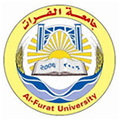آخر الأخبار
دور نسب الخلط الفيزيائي للترب كطريقة لاستصلاح التربة الملوثة بالنفط الخام وأثره في بعض خواص التربة
2014, Volume 10, issue 39,pp 38-63| Cite as
The Role Of The Physical Mix Rates Of Soils as A Method Of Reclamation Of Petroleum Polluted Soils and Its Effect On Some Soil Characteristics
| authors |
Kasem Al-faraj,Ali. Amrir ,Kefah sharaf Al-Deen |
| Abstract |
Was carried out this study to demonstrate the possibility of mixing physical contaminated soils soils clean in solving oil pollution in the soil problem by estimating some vital activities of soil microbes . been implemented experience pots with a capacity of 6 kg of mixture dirt composed of soil and river sand by (1:3) (Sand: Soil) and then mixed soils pots at different rates from the soil of crude oil contaminated (see 0.20 % and 30% .40 %.50 %) and the seeds sown barley by / 30 / seed per potted and has laboratory microbiological chemical and vital time in three stages and was The mixing ratio of 20% contaminated soil , as well as the ratio of 30% seen in the results of this experiment concentrations doped for prepared bacteria and fungi in soil considered mixing ratio of 40 %, 50% ratios inhibitor of bacterial growth and mushrooms, and the ability of fungi to decompose over time even focus a 40% measurable actinomays have proved instrumental in the reclamation of contaminated soil and grew up in the mixing ratios of 40% and 50 % and this is an important conclusion future Any physical reclamation can be used directly in the soil in order to reclamation and purification . And Co2 measurement showed an accumulation of quantity despite the decline in the number of microbes in the majority of concentrations and this is due to the decomposition of the oil compounds remained constant, which led to the accumulation of Co2 in the soil. As phenols are formed in the soils experience steadily with increasing mixing ratios and significant differences were statistically significant compared with witness.
Key word : oil pollution , physical mixing, measuring Co2, total phenols , indole acetic |
| الكاتب |
علي امرير , قاسم الفرج , كفاح شرف الدين |
| الملخص |
جرى تنفيذ هذه الدراسة لبيان إمكانية الخلط الفيزيائي للترب الملوثة بالترب النظيفة في حل مشكلة التلوث النفطي في التربة من خلال تقدير بعض الأنشطة الحيوية لميكروبات التربة. إذ تم تنفيذ تجربة أصص بسعة 6كغ من خلطة ترابية مكونة من التراب والرمل النهري بنسبة (1:3) (Sand:Soil) ثم خلطت ترب الأصص بنسب مختلفة من تربة ملوثة بالنفط الخام (شاهد%20, %30, %40, %50, ) و زرعت بذور بالشعير بواقع /30/ بذرة في الأصيص الواحد وتمت التحاليل المكروبيولوجية الكيميائية والحيوية في ثلاث مراحل زمنية وكانت النتائج كما يلي :
إن نسبة الخلط %20 تربة ملوثة وكذلك النسبة%30اعتبرت في نتائج هذه التجربة تراكيز منشطة لأعداد البكتيريا والفطريات في التربة واعتبرت نسبة الخلط %40 , %50 نسب مثبطة للنمو البكتيري والفطر , وقدرة الفطريات على التحلل مع مرور الزمن حتى التركيز %40 للقياس, وقد أثبتت الاكتينومايس دورا فعالا في استصلاح الترب الملوثة وازدادت حتى في نسب الخلط %40 , %50 وهذا استنتاج هام مستقبلي للاستصلاح الفيزيائي أي يمكن استخدامها بشكل مباشر في التربة بهدف الاستصلاح و التقنية. وقياسCo2 أبدى تراكم لكميته بالرغم من انخفاض أعداد الميكروبات في أغلب التراكيز وهذا يعود إلى أن تحلل المركبات النفطية بقي مستمرا مما أدى إلى تراكم Co2 في التربة. كما تتشكل الفينولات في ترب التجربة بشكل مطرد مع زيادة نسب الخلط وبفروق معنوية ذات دلالة إحصائية مقارنة مع الشاهد.
كلمات مفتاحية: التلوث النفطي , الخليط الفيزيائي , قياسCo2 , الفينولات الكلية , إندول أسمتيك . |














